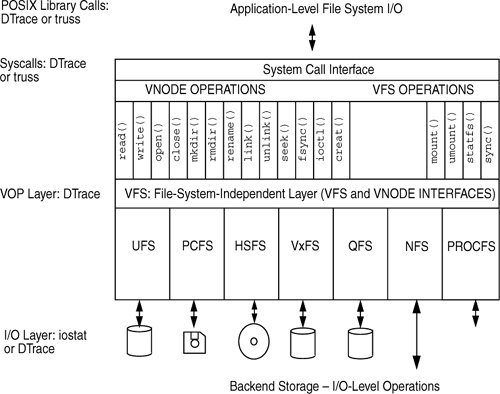Section 5.1. Layers of File System and IO
5.1. Layers of File System and I/OWe can observe file system activity at three key layers:
Figure 5.1 shows the end-to-end layers for an application performing I/O through a file system. Figure 5.1. Layers for Observing File System I/O |
EAN: 2147483647
Pages: 180